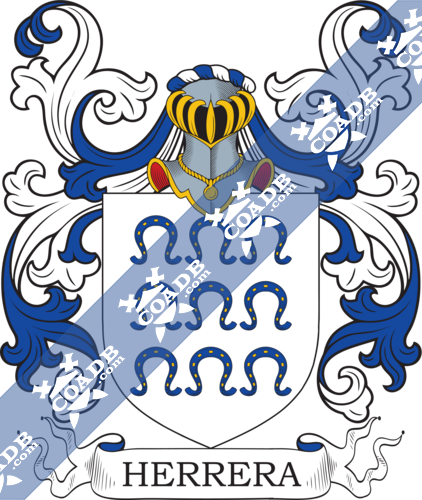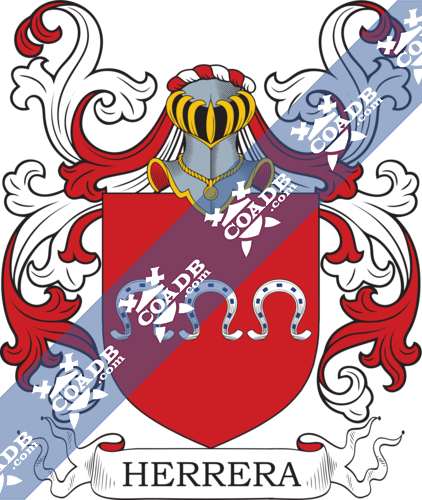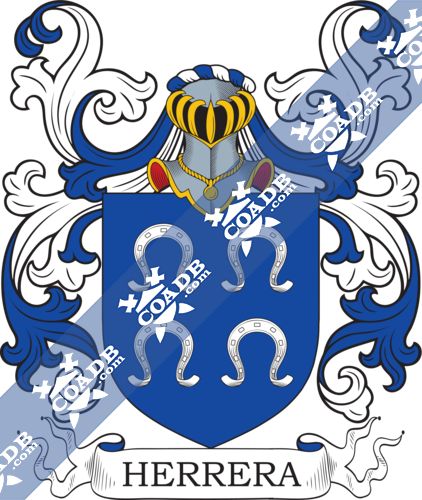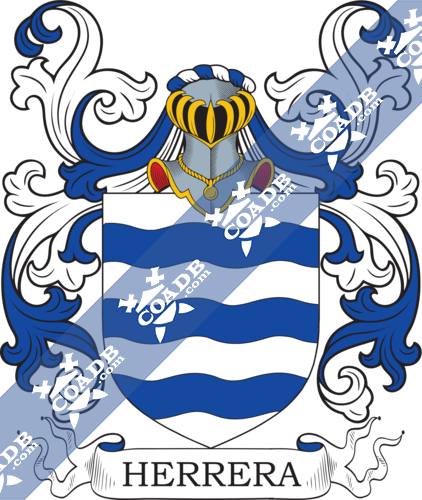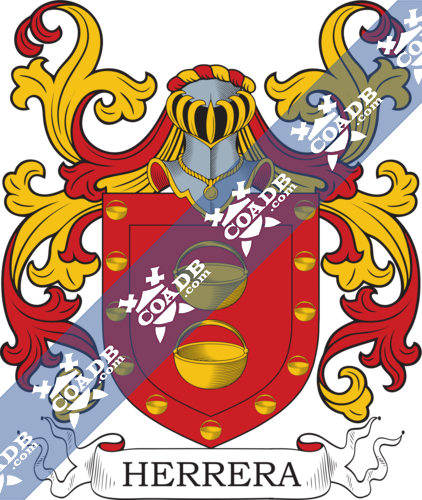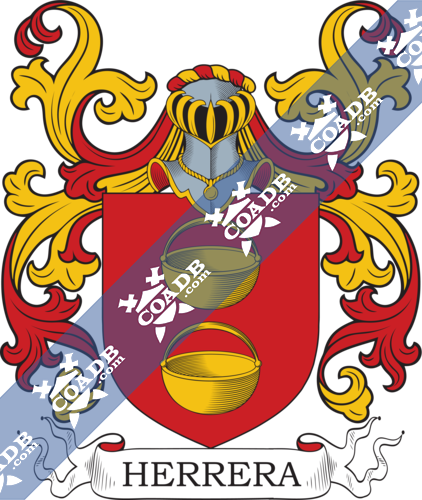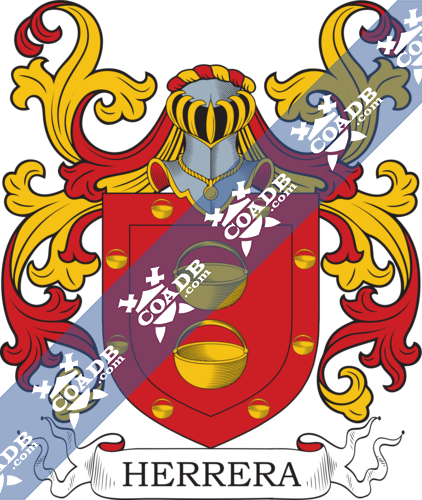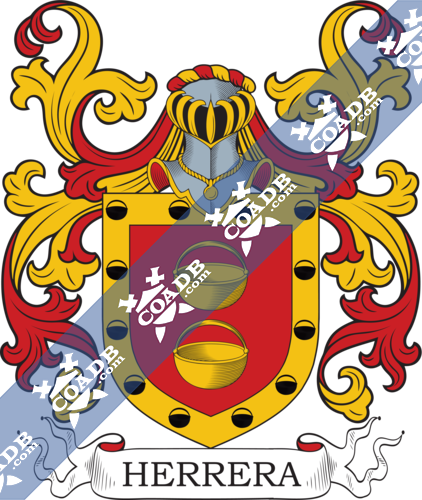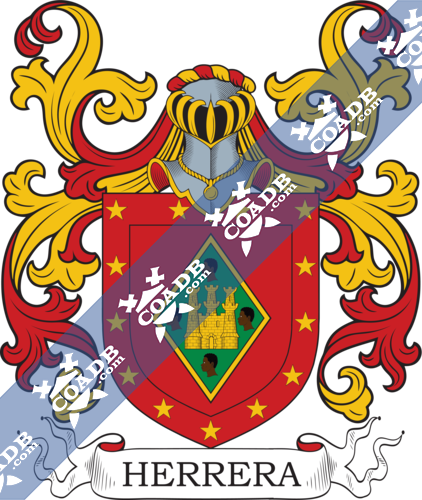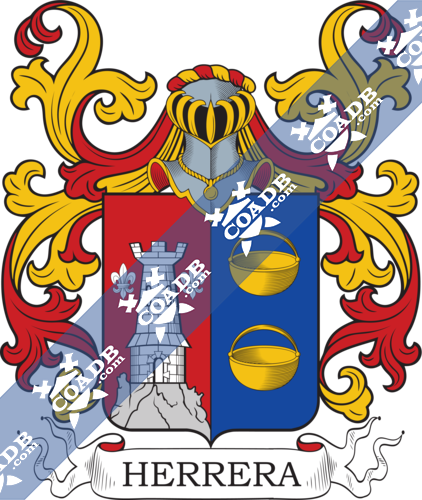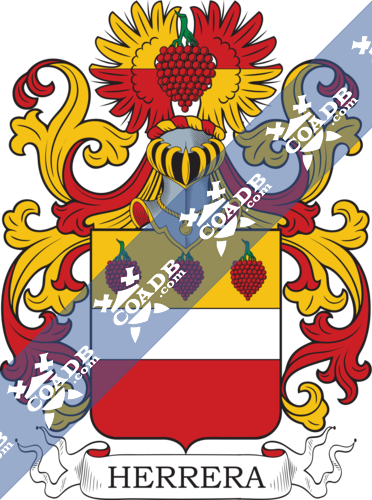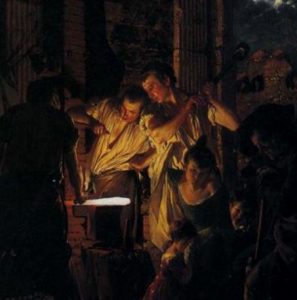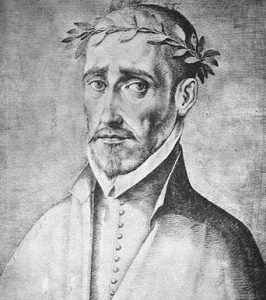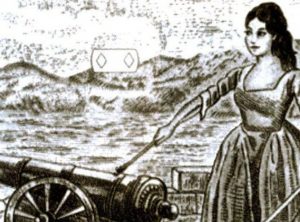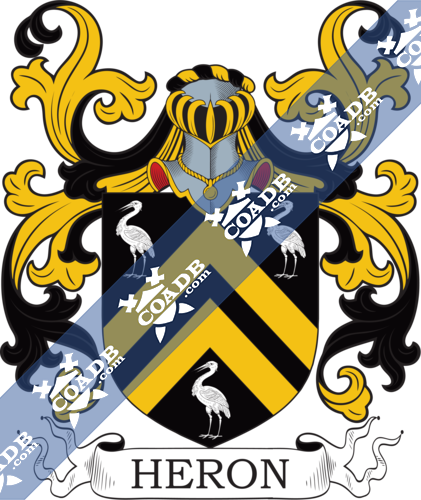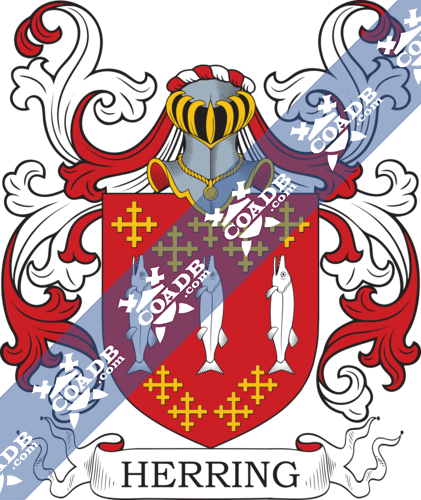Herrera Family Crest, Coat of Arms and Name History
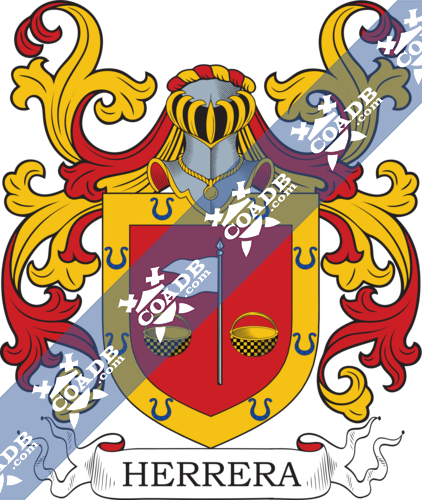
Herrera Coat of Arms Gallery
Don’t know which Coat of Arms is yours?
We can do a genealogical research. Find out the exact history of your family!
Learn MoreSurname Meaning, Origin, and Etymology
Herrera is an old Spanish surname that is in the category of occupational surnames, which are created after a certain kind of work. In this case, Herrera is connected to iron works, like a blacksmith or to the place where iron is used as the main element for a job. Etymologically, it comes from the Latin word Ferraria which means “ironwork” and also Herrera is the feminine word in Spanish for a blacksmith.
The work and workplaces related to iron were very popular in all Europe during the Medieval Ages, actually, they were a central aspect of society back then. The surname Herrera can be found for the first in time in the region of Castile, Spain, however, it can also be seen in Portugal during the same period of time. The first record of a bearer of Herrera or one of its spelling variations belongs to Lord Alvaro Rodrigues Ferreira who was listed in Leon, Spain in 1170.
Spelling Variations
The phenomena of spelling variations were very common during the Medieval Ages. It was during this time that several factors played different key roles in the creation of different ways of writing a single surname, which eventually led to new different last names.
One of these elements was the influences of many cultures in one territory. This happened because of all of the armed conflicts that occurred in these dark times. One of the consequences of war was that a certain population changed of rulers after it ended. For example, Spain was originally inhabited by the Gauls, then controlled by the Roman Empire, later there was the Muslims and then regained by Christians. This caused that all these groups have a fundamental role in the cultural development of this region and a part of that culture was the surnames used by people.
Another important factor was the lack of grammatical rules, thanks to this there wasn’t a right way of writing words. The job of writing was done by scribes because not everyone knew how to do it, but many times the only guide they had to do their job was how they hear words. The consequence was that every scribe could have his own way of writing, so they wrote the same surname in different ways. In that order, wrong translations also have its share of guilt, because they also created spelling variations.
A third factor was that certain familiar groups wanted to be easily distinguished from the main branch so they changed, added or removed a letter from their surname to accomplish their goal. They did it to express their loyalty to a certain lord or king or that they followed a particular religion. This wasn’t rare in families that followed different living codes.
In the case of Herrera, it has another reason to add more confusion, it has a Spanish origin, but also a Portuguese one, so it has spelling variations in both languages. The most common variations in Spanish are Herrero, Herreras, Herreros, Herrerías, Herrerias, Herrezuelo, Hierro, Ferrera, Ferrero, Ferreras, Ferreros, Ferreiro, Ferreira, Fierro, Ferruz, Deherrera and more.
And in Portuguese the most common spelling variations of Herrera are Ferrara, Ferrera, Ferrari, Ferraro, Ferreri, Ferreria, Ferrer, Ferrera, Ferrero, Ferrera, Ferrarius, Ferriere, Ferrieres, Ferrera, Ferrarese, Ferraresi, Farreras, Farrera, Farreres, Ferri, Fierro, Hiero, Fer, Ferretti, Ferrettini, Ferretto, Ferrettino, Ferrin, Ferrini, Ferrino, Ferrucci, Ferruzzi, Ferrulli, Ferrotti, Ferroni, Ferron Ferrone and more.
Popularity & Geographic Distribution
Nowadays, Herrera is a very popular surname. Actually, is the 291st most popular surname according to the census of 2014. It counts on approximately 1,676,368 bearers and the country with the biggest number of them are in Mexico, the second one in Colombia and the third in the United States. The country with the highest density of users of Herrera is Nicaragua.
Early Bearers of the Surname
Thanks to some good records, it is possible to know some of the first bearers of Herrera and its spelling variations, such as García de Herrera a Castilian nobleman from the 14th century, Gabriel Alonso de Herrera a philosopher and mathematician who lived during the 16th century, Juan de Herrera who was an architect under the reign of King Phillip II, and Fernando de Herrera a 16th century poet. Portugal also offers records of old users of the spelling variations of Herrera like Lord Alvaro Rodrigues Ferreira who can be seen the List of Leon in 1170 and Cristovao Ferreira a Jesuit missionary who lived from 1580 until 1650.
History, Genealogy, and Ancestry
Fortunately, there are good records that show some genealogical trees of families that have used the surname Herrera. One of them began with Baltazar de Herrera who in 1590 got married to Ursula Justiniano, daughter of Pascual Vicencio and Jerónima Justiniano. They had two children, the first one was Ignacio de Herrera Aguilar who got married to Juliana Nieto de Chavez y Briseño, daughter of Gaspar Nieto de Chavez and Lorenza Briseño.
Ignacio and Juliana had their own children, the oldest was Baltasar de Herrera Nieto de Chavez who in 1661 got married to Ignacia Garín Gorón, but they didn’t have offspring. The second son of Ignacio and Juliana was Antonio Herrera Nieto de Chavez who grew up to become a Captain and also to get married to Violante Gonzalez de Rivera y Roa with whom he had four children: Juan Herrera Gonzalez de Rivera, Josefa Herrera Gonzalez de Rivera, Casilda Herrera Gonzalez de Rivera and Juana Herrera Gonzalez de Rivera.
The second child of Baltazar de Herrera and Ursula Justiniano was Pedro Herrera de Aguilar who got married to Maria Veloso Candia, daughter of Juan Veloso and Lorenza Candia Robles. Pedro and Maria had only one daughter, Ana de Herrera Aguilar y Veloso, who got married to Pedro de Molina Vasconcelos, but there are no records of their offspring.
Another of a Herrera family is the one of Sebastián de Herrera who was born in Chile in 1706 and got married three times. The first one to Alava C. María de Iturrichea, the second time to Francisca Barraza Ormeño y Cortes de Arriaza Hevia and the third time to Ana Rosa Romero Moreno y Escobar Villarroel Aguayo.
Sebastián de Herrera had nine children, the first one was Sebastián Miguel de Herrera e Iturrichea who got married to Isabel Jofré de Loaysa y Alderete. Sebastián Miguel and Isabel had one child, Ignacio Herrera Jofré who got married to Isabel de Urbina y Ramírez Arellano, daughter of Bernardino de Urbina Quiroga y Rojas and Beatriz Ramírez de Arellano Arube. Ignacio and Isabel had two children Ana Josefa de Herrera y Urbina and María Loreto de Herrera y Urbina.
The other children of Sebastián de Herrera were Ignacia de Herrera y Barraza, Sor Lorenza de Herrera y Barraza, Nicolás de Herrera y Barraza, María de Herrera y Barraza, José de Herrera y Romero, Sebastián de Herrera y Romero and Juan de Herrera y Romero. This last one got married to Rosa del Manzanal y García Sobarzo and they had two children, Pedro Domingo de Herrera y del Manzanal and María Rosa de Herrera y del Manzanal.
The third bearer of Herrera that can be mentioned is Francisco de Herrera Sotomayor who was born in Santiago de Chile, became a Captain and got married to Mayor de Padilla Ortiz de Araya. They had had two children, Francisco de Herrera Sotomayor Padilla, who didn’t have offspring and Juan de Herrera Sotomayor Padilla who was born in Santiago de Chile in 1626 and got married to Marcela de Escobar Villarroel y Aguayo.
Juan de Herrera Sotomayor Padilla and Marcela de Escobar Villaroel y Aguayo had three children Rosa Herrera Sotomayor y Villarroel y Aguayo who got married to Juan de Palma y Pozo Silva, Isidora Herrera y Villarroel who got married to Bartolomé Nuñez de Silva y Rojas Puebla and José Herrera y Villarroel Aguayo who was born in 1665 and got married to Francisca Vasques de Arenas Herrera.
José and Francisca got four children, Jose de Herrera Sotomayor y Vasques de Arenas who got married to Maria Josefa Ibarra with whom had five children: Pedro Jose Herrera Ibarra, Andrés Herrera Ibarra, Manuel Herrera Ibarra, Jose Herrera Ibarra and Maria Fermina Herrera Ibarra. The following children of José and Francisca were Patricio de Herrera Sotomayor y Vasques de Arenas, Marcela de Herrera Sotomayor y Vasques de Arenas and Esteban de Herrera Sotomayor y Vasques de Arenas.
Early American and New World Settlers
After Europeans found out about America, many of them decided to start a new life in this new continent. Some of them that did the traveling in the 16th century were Alonso de Herrera who crossed the sea in 1511, Cristobal de Herrera who did it in 1513, Gregorio Herrera who landed in Peru in 1534, Luis de Herrera who sailed to New Spain that same year and Diego de Herrera who arrived in America in 1561
More people from the old continent arrived in America during the 19th century, such as Jacinto Herrera, who landed in Puerto Rico in 1803, Jose Herrera reached the same destiny that year, Juan de Herrera and Pedro de Herrera who arrived in America in 1810 and Ortega de Herrera who did it in 1812
Notables
There have been several remarkable bearers of Herrera in different fields such as Alex Herrera (b. 1976) a baseball player from Venezuela, Eddy Herrera (b. 1964) Dominican merengue singer, Danny Herrera (b. 1969) an American Drummer who plays in the band Napalm Death, Flavio Herrera (1895-1968) a Guatamelan writer and diplomat, Freddy Herrera (b. 1973) a Panamian baseball player, Carolina Herrera (b. 1939) a Venezuelan fashion-designer, Gustavo Herrera (1890-1953) a Venezuelan politician, Hugo Herrera (b. 1979) a Argentinian footballer, Judith C. Herrera (b. 1964) an American Judge, and Lorena Herrera (b. 1967) an actress from Mexico.
Blazons & Genealogy Notes
1) Marquis d’Auñon – Andalousie – De gueules à un guidon d’argent flottant à dextre accosté de deux chaudières échiquetées d’or et de sable à la bordure d’or ch de huit fers-à-cheval d’azur les bouts en haut. Gules with a flag argent flying to the dexter having to the sides two cauldrons checky or and sable a bordure or charged with eight horseshoe azure the tips upwards.
2) Cordoue – D’argent à trois fasces ondées d’azur. Argent three bars undy azure.
3) Herrera-Toledo – Flandre – Coupé d’or sur gueules à la fasce d’argent brochant sur le coupé l’or chargé de trois raisins rangés de gueules tigés de sinople les tigées en haut Cimier un raisin de l’écu entre un vol coupé alternativement d’or et de gueules Lambrequin d’or et de gueules. Per fess or over gules a fess argent covering over the partition the or charged with three grapes arranged gules stemmed vert the stemmed upwards Crest: a grape of the shield between a pair of wings per fess alternately or and gules Mantling: or and gules.
4) Las primitivas del linaje fueron – En campo de gules, dos calderas, de oro, puestas en palo
5) Otros traen – En campo de gules, dos calderas de oro con cabezas de sierpe, de sinople, por asas; bordura del mismo color, con ocho calderas de oro
6) Los Herrera aragoneses documentados en Ariza, Pozuelo y Zuera desde el siglo XVII, usaron – En campo de gules, dos calderas de oro fajadas de gules; bordura de gules, con doce calderas de oro
7) Otros traen – En campo de gules, dos calderas de oro, una sobre otra; bordura de oro, con doce calderas de sable
8) Otros traen – En gules, un losange de sinople, perfilado de oro, cargado de un castillo de oro y cantonado de cuatro cabezas de moros, degollados. Bordura de gules, con trece estrellas de oro
9) Los de Miengo (Santander) – Escudo partido, 1º, en campo de gules, una torre de plata sobre peñas, con una flor de lis de plata a cada lado, y 2º, en campo de azur, dos calderas de oro con las asas de cabezas de sierpe, de sinople, dos a cada lado
10) Radicado en Jaén – En campo de plata, nueve herraduras, de azur, bullonadas de oro, puestas tres, tres, tres
11) Radicado en Madrid y Sevilla – En campo de gules, tres herraduras, de plata, con bullones, de azur
12) De la Herrera, originario de Castilla – En campo de azur, cuatro herraduras, de plata, puestas en los cantones del escudo.
13) Los de Andalucía – En campo de gules, dos calderas jaqueladas de oro y sable y un pendón entre las dos; bordura de oro, con ocho herraduras de azur.

